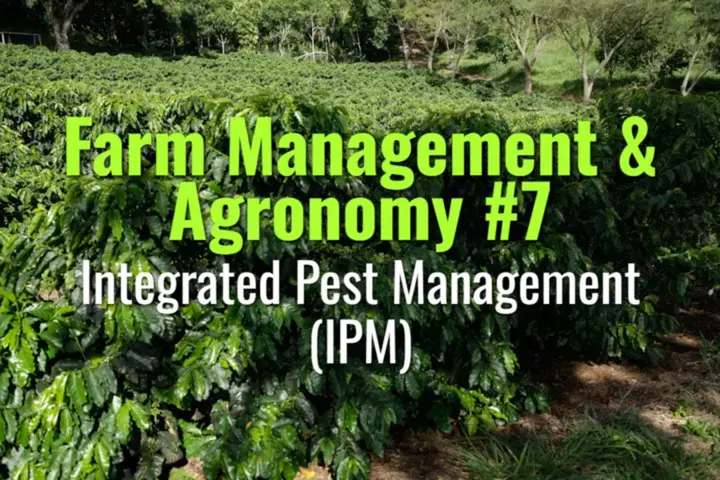Integrated Pest Management (IPM)
This topic explains Integrated Pest Management (IPM) in coffee farming—an ecologically based approach that combines cultural, biological, and chemical methods to control pests while minimizing environmental impact.
- Coffee Basics Nerds
- 2 min read
Article 7 of 12 in Farm Management & Agronomy/

What is IPM?
- Definition: IPM is a holistic approach to pest management that prioritizes prevention, monitoring, and non-chemical methods, with pesticides used only as a last resort.
- Goal: Reduce pest damage to acceptable levels while safeguarding the environment, beneficial organisms, and human health.
Key Coffee Pests Targeted by IPM
- Coffee Berry Borer (Hypothenemus hampei): World’s most damaging coffee pest.
- Coffee Leaf Miner (Leucoptera coffeella): Damages leaves, reducing photosynthesis.
- Stem borers and root pests: Weaken plants and reduce yields.
- Nematodes: Harm roots, reducing nutrient uptake.
Core Components of IPM
1. Monitoring & Thresholds
- Regular field scouting for pest populations.
- Use of traps (pheromone, light) to track infestations.
- Economic threshold concept: act only when pest damage justifies intervention.
2. Cultural Practices
- Sanitation: Collect and destroy fallen cherries to reduce berry borer breeding.
- Pruning: Improves airflow and reduces pest habitat.
- Crop diversity: Shade trees and intercropping enhance ecological balance.
3. Biological Control
- Release or conserve natural enemies:
- Parasitoid wasps (Prorops nasuta, Phymastichus coffea): Attack berry borer.
- Predatory ants and birds: Suppress pest populations.
- Use of microbial agents:
- Beauveria bassiana (fungus) infects berry borers.
4. Resistant Varieties
- Adoption of cultivars bred for pest and disease resistance (e.g., Castillo, Catimor).
5. Targeted Chemical Control
- Pesticides applied only when necessary and in rotation to prevent resistance.
- Preference for selective products that minimize impact on beneficial organisms.
Farmer Training and Adoption
- IPM success depends on farmer education.
- Requires knowledge of pest life cycles and ecosystem dynamics.
- Farmer field schools and cooperative programs play a key role.
Benefits of IPM
- Reduces pesticide dependence and costs.
- Protects biodiversity and beneficial insects.
- Improves worker safety and environmental sustainability.
- Sustains long-term productivity.
Lasting Importance
Integrated Pest Management offers a balanced, sustainable solution for controlling coffee pests. By combining science, ecology, and farmer knowledge, IPM ensures crop protection while maintaining the health of ecosystems and communities.